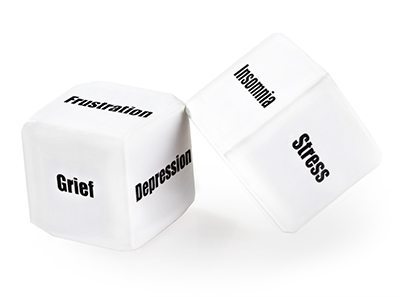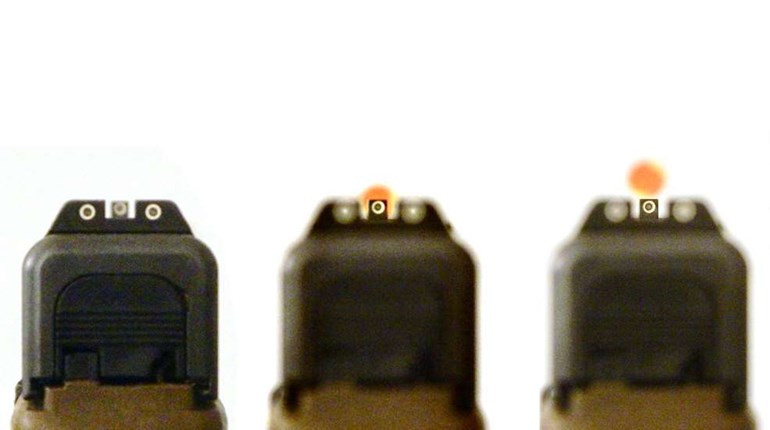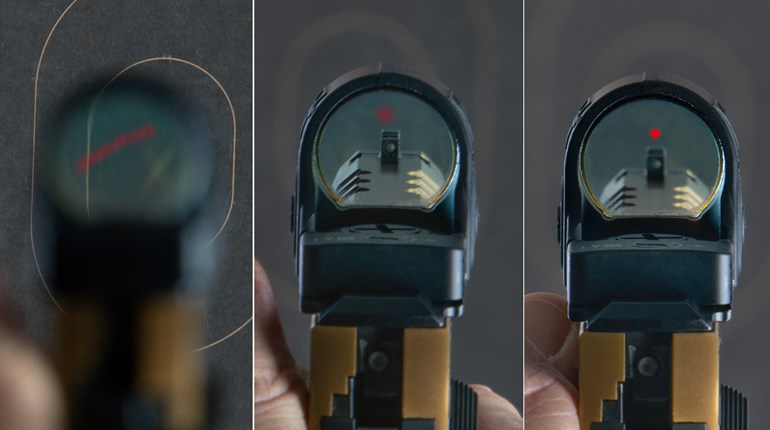
Research has noted a variety of mental-health consequences that have been experienced by countless individuals, families, communities and businesses adversely affected by the COVID-19 pandemic since 2020. Now, as most states lift nearly all imposed restrictions, what happens when those people experiencing psychological and/or financial duress, anxiety, depression, panic, frustration and desperation move back toward resocialization? Should you expect a potential increase in physical violence? If so, how can you identify those risks and further protect yourself from emerging or harmful threats? The answers to these important questions begin with a deeper understanding of the current social condition.
In an article published by the American Psychological Association (APA) on the psychological impact of COVID-19 is this bit of information: “The coronavirus pandemic is an epidemiological and psychological crisis. The enormity of living in isolation, changes in our daily lives, job loss, financial hardship and grief over the death of loved ones has the potential to affect the mental health and well-being of many.”
The article goes on to discuss the importance of identifying signs of anxiety, panic, depression and suicide in others. Similar research has brought to light further mental-health consequences of the pandemic, including stress, depression, frustration, desperation, insomnia, irritability, grief, emotional exhaustion and in some instances, traumatic-stress symptoms.
According to a relevant article by Serafini et al. (2020), “… although there may be varied responses to the COVID-19 pandemic, there are several common psychological reactions that are surfacing amongst the general population. These reactions include intense and uncontrolled fear related to infection, pervasive anxiety, frustration, boredom and disabling loneliness. Understandably, psychological consequences included in these findings may impair an individual’s well-being and quality of life.”
As further discussed by Serafini, “… the psychological impact of fear and anxiety induced by the rapid spread of pandemic needs to be clearly recognized as a public health priority for both authorities and policymakers.” Be it an admonition to authorities and policy-makers, how does that translate to we non-authorities and non-policymakers? How does this put you on notice and more importantly, how can you identify such risks and further avoid or mitigate a threatening situation? Set your expectations, apply behavioral assessment and take proactive measures.

Setting Expectations
Expectations, in terms of socialization, are considered a set of predetermined personal ideas or anticipations of a specific event or an activity.
Applying these APA findings made available to authorities and policymakers in your day-to-day life, you can anticipate an increase in experiencing mental-health consequences of the pandemic in others like stress, depression, frustration, desperation, insomnia, irritability, grief, emotional exhaustion and the like. Setting your expectations that there is a greater likelihood of your interacting with someone experiencing any or all of these consequences, places you ahead of the action-reaction power curve in terms of risk identification.
Setting your expectations should also include a plan detailing how you may interact with someone affected by these consequences to achieve a successful outcome. A commonly recommended method is to establish a rapport. Nothing melts social veneer better than sharing common ground. Be empathetic. It’s not much of a reach to relate, as we were all impacted by the pandemic in one way or another.
Communication is the universal solvent. People love telling their story. Applying your empathy and exhibiting true interest in their situation breaks down real or imagined communication barriers and further paves the way for increased conversation, in turn fostering a common bond and even an affinity with the other person.
Last, but certainly not least, you can expect the unexpected. As you have survived abnormal social conditions, you can expect abnormal social consequences. Frustration, desperation, irritability and grief can cause people to say or do things that they normally would not under normal conditions.
Expecting anything from anyone places you in the advantageous position of not being surprised by anything they might say or do. Eliminating that element of surprise keeps you from being knocked off balance and helps keep you alert to the realities of the situation. Setting your expectations gives you the advantage of foresight, affording you adequate mental preparation and planning. It is a simple, yet viable proactive measure contributing to your mental toughness and personal resilience that would otherwise be set at a lower default level.

Behavioral Assessment
If you are not aware of something, then that something remains invisible to you. What goes unseen can sometimes be the one thing that causes the biggest problem. A typical example of this you often hear after the fact is “Wow, I sure did not see that coming!”
It’s true that no individual or organization can detect everything. However, the greater your powers of observation, the better your chances of success in spotting something you should know about. You can’t respond to something you can’t see. In the world of professional protective services, one often hears the cliché “see it, fix it” (before it turns into something potentially much worse.) But what exactly is “it”? The answer is called behavioral assessment.
A behavioral assessment can determine if something you observe is either an actionable item or a non-actionable item. If it is an actionable item, then it warrants your attention. If it is a non-actionable item, then there’s no need to worry about it. If you observe a behavior that may catch your interest, raise your mental acuity or otherwise get your attention, then this is a behavior that qualifies as an actionable item.
To help you make that determination, observable activities of an emerging threat can be identified as any one of three actionable items:
Potential-violence influencers
Observable concerning behavior
Potential-threat indicators
A potential-violence influencer may take the form of a conversation revolving around the threat of assault on another individual or destruction of property. Something along the lines of “You know it just makes me want to punch that guy in the throat!” might be an example of a potential violence influencer which you could consider an actionable item.
A notch down from potential-violence influencers are observable concerning behaviors. Such behaviors may include something along the lines of a sudden physical outburst like observing someone kick or smack something with their hand or foot to physically emphasize a verbal statement. An observable concerning behavior such expressive physical contact is considered an actionable item.
Lowest on the scale, a potential-threat indicator might be observing someone who is plainly irritable, frustrated or upset and appears to be on the verge of violence. Although not a clear and present danger, such behavior indicates a potential threat that may be a precursor to follow-on events and is therefore considered an actionable item by raising your awareness.
It should be noted that certain behaviors considered to be actionable for one scenario may differ substantially from those of another. Also, actionable in this context does not necessarily mean you need to take any action. Rather, it means that there is something worth paying attention to in the event action could be required.
Setting your expectations and running a behavioral assessment are two very reliable proactive measures. The need to defend yourself arises when things deteriorate such that proactive measures are no longer applicable, and the only remaining choice is to rely upon your reactive measures.
Failing to observe a potential-violence influencer, concerning behavior or potential-threat indicator means that you have forfeited the opportunity to take proactive measures. If you fail to see emerging-threat indicators, then you have given up the opportunity to take further proactive measures. If you can’t hear it, see it, feel it or smell it coming then you may be completely taken by surprise and have no other choice but be forced to react to the situation.
A reliable proactive measure utilized by law enforcement and professional protective agents is de-escalation. Referencing law enforcement and protection application, de-escalation can be defined as the application of non-violent strategies and techniques to decrease the intensity of a situation, improve decision-making, communication, eliminate or reduce the need for use of force.

If an obviously irritated person raises their voice and starts to get into a heated conversation with you where you realize that the pot of water is about to boil over, what are some things you can do to de-escalate the situation or lower the heat under that pot of bubbling water?
A 2016 report by Washington, DC-based criminal justice think-tank the Police Executive Research Forum (PERF) lists 30 guiding principles for law enforcement use-of-force policy and training. At least eight of the guidelines directly reference de-escalation or discuss aspects of how officers can reduce force by backing off in situations where immediate action is not mandated by law or required for officer or public safety. According to Police magazine, veteran street officers and trainers would tell you de-escalation is the result of a combination of communication, empathy, instinct and sound officer-safety tactics. Its goal is to help the officer achieve a good outcome where neither the officer nor the subject is injured.
Guiding principle number 18 of the 2016 PERF report stresses the importance of effective communication. Remaining in good communication with someone can include being aware of what the agitated person may be experiencing such as feelings, perspective, etc. from their point of view. Tuning into that person affords you a readable frequency from which to better communicate. You can lower your voice, change your body language (present the palms of your hands), walk away or any combination thereof.
If de-escalation is used extensively by the likes of protection and law-enforcement professionals, then there’s something to it and it shouldn’t be ignored as a viable risk-management or threat-mitigation option.
Avoidance happens to be the “A” answer when it comes to confrontational situations, but there are times when you cannot simply walk away or by doing so, the situation would deteriorate even further. In such scenarios, de-escalation becomes the quintessential “A” answer.
Given the extremely litigious society in which we now live, proactive measures are soft skills—those techniques utilizing your mind, powers of observation, decision-making, verbal communication and the like—that will serve you far better than any physical reactive measures. Proactive measures are a matter of soft skills where reactive measures involve physical use of force where you may incur a high probability of physical injury and litigious fallout.
Being well-informed by vetted research that has brought to light the varied mental-health consequences of the COVID pandemic such as stress, depression, frustration, desperation, insomnia, irritability, grief, emotional exhaustion, etc. allows you to make better decisions.
Setting expectations enhances your personal preparedness by preparing you, reinforcing your resiliency and significantly contributes to more effective decision-making, especially under duress.
Behavioral assessment of potential-violence influencers, threat indicators and other observable concerning behavior can help you determine if something you observe is either an actionable or a non-actionable item and subsequently provide you an opportunity to respond appropriately.
Such proactive measures—to include de-escalation and related soft skills—are a result of actively applying both your situational awareness and observation. Knowing what to look for and how to look for it allows you to see emerging-threat indicators and provide you the time and opportunity to take further proactive measures in post-pandemic societal reintegration.




































